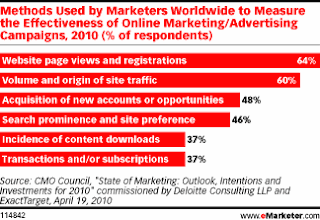 I believe many are looking at this in too narrow a fashion. Everyone is trying to assign a dollar value to a Facebook fan or Twitter follower instead of addressing the fact that engagement and interaction that takes place in these mediums and are incredibly important to a brand. They build relationships, create an emotional connection and therefore lead to Return on Relationship™… simply put the value that is accrued by a person or brand due to nurturing a relationship. ROI is simple $’s and cents. ROR is the value (both perceived and real) that will accrue over time through connection, loyalty, recommendations and sharing.
I believe many are looking at this in too narrow a fashion. Everyone is trying to assign a dollar value to a Facebook fan or Twitter follower instead of addressing the fact that engagement and interaction that takes place in these mediums and are incredibly important to a brand. They build relationships, create an emotional connection and therefore lead to Return on Relationship™… simply put the value that is accrued by a person or brand due to nurturing a relationship. ROI is simple $’s and cents. ROR is the value (both perceived and real) that will accrue over time through connection, loyalty, recommendations and sharing.
The mistakes I see being made is trying to measure Social engagement with the same tools we measure every other digital touch point. In my view email, search, even banner ads, have spoiled marketers into thinking everything can be and must be measured with the same metrics used to gauge success in other mediums. Initially as you are building your Social Media audiences, and testing, I have three stages with which I measure… #1 is Audience growth, #2 is Reactivity… getting them to take an action, and #3 Stickiness… keeping them coming back, engaged and interacting.
In addition setting expectations is important for the future are critical. Setting goals for number of follows/fans and how you interact and engage with them and them with you, can be very useful. Growth of your audience is very important as clearly outlined in the study by research firm Chadwick Martin Bailey… Consumers Engaged Via Social Media Are More Likely To Buy, Recommend, and their follow-up report… 10 Quick Facts You Should Know About Consumer Behavior on Twitter.

 We often talk about social media ROI being measured differently. These are different behaviors and we should be applying new and different measurement standards, right? One of my favorite demonstrations of this is
We often talk about social media ROI being measured differently. These are different behaviors and we should be applying new and different measurement standards, right? One of my favorite demonstrations of this is 
